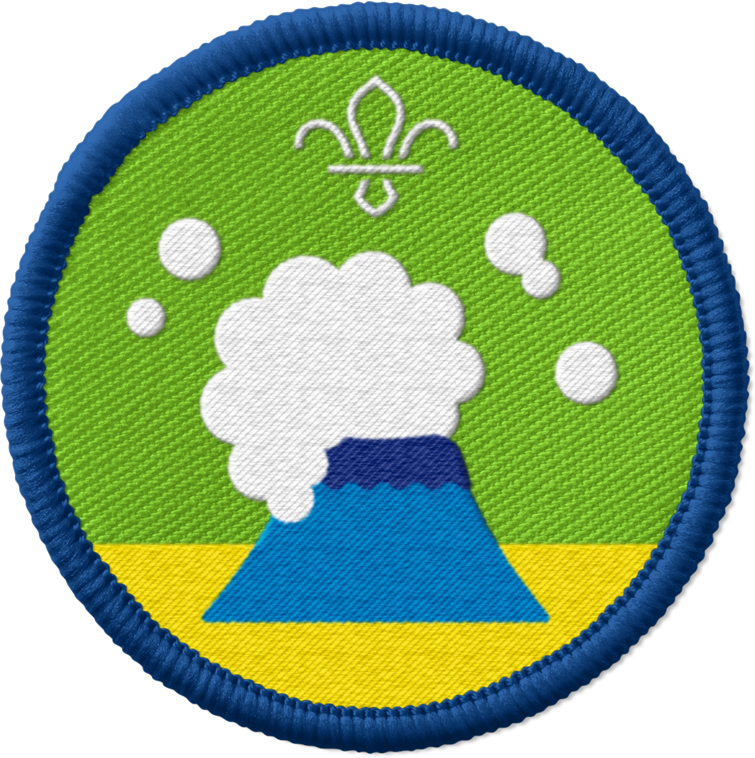Fizzing fruits
You’ll need
- Something to protect surfaces (for example, newspaper or tablecloths)
- Knives
- Chopping boards
- Baking trays
- Washing up liquid
- Mixing bowls
- Spoons
- Disposable gloves
- Jug
- Bicarbonate of soda
- White vinegar
- Blender
- Cups
- Fruit
- Pipette or Syringe
Before you begin
- You may want to run this experiment as one of a few bases. If you’re running two or three experiments at the same time, put the equipment each needs on the table and make sure there’s an adult at each table.
- Cover tables with newspaper or wipe down tablecloths – this could get messy!
- Check if anyone has any allergies before you buy the fruit.
- Prepare the fruit – getting this right can be a bit fiddly, so it’s probably best for an adult to do this before you start. Slice off the top and carefully cut or scoop out the flesh. You need to scoop out at least enough flesh to hold the fairy liquid, food colouring, and vinegar.
- Put the flesh in a bowl and put it to on side, far away from where you’ll be doing the experiment.
- Plan ahead and let everyone know what equipment they’ll need to do this activity online at home. You could think about safely delivering the equipment to group members if it’d be appropriate and manageable for your group.
- Ask parents or carers to support everyone to make their fruity volcanoes.
- Check out the advice on using Zoom and other popular digital platforms and the guidance on being safe online.
Make the volcano
- Split into small groups. Each group should have an adult.
- Each group should choose a piece of prepared fruit and put it on a baking tray. Everyone should roll up their sleeves to protect their clothing.
- Each group should squirt two teaspoons of washing up liquid into the fruit, then add a few drops of food colouring.
- Each group should add two or three teaspoons of bicarbonate of soda to the washing up liquid in their fruit. The fruit volcano may start to fizz.
Create an eruption
- Everyone should stand back.
- An adult should put on protective goggles. They should use a pipette or syringe to carefully add white vinegar into the fruit, one drop at a time, until it reacts.
- Everyone should watch the fruit volcano react – a mixture will spill over the sides just like lava.
- Each group could repeat the experiment with a different fruit. They could change the amount they add of different ingredients to see how it affects the volcano.
Make a smoothie – waste not, want not
- Once everyone’s finished the experiment, they should clean up their area by disposing of the finished fruit volcanoes in food waste bins or compost. They should wash their equipment, surfaces, and hands with warm soapy water.
- Everyone should work together to use the saved fruit flesh to make a tasty smoothie. They should add it to a blender and pulse until smooth.
- Everyone should enjoy their fruity drink while reflecting on their experiment.
Reflection
This activity needed everyone to use science skills including following instructions, thinking about outcomes, and observing results. Everyone should gather together and talk about which fruits made the biggest volcanoes. Citrus fruits (such as lemons) usually produce the most fizz because citrus is acidic like vinegar so it reacts with the bicarbonate of soda.
Does anyone know why mixing the bicarbonate of soda with the vinegar made a volcano? A gas called carbon dioxide was released in the chemical reaction – it formed bubbles that looked like lava and escaped the fruit. We make carbon dioxide too. People can’t see or smell it, but if everyone puts their hand near their mouth and breathes out they’ll be able to feel their warm breath which has carbon dioxide in it.
When everyone made their volcanoes, they needed to add the correct balance of different ingredients. Some people may have had the chance to experiment with changing the amount of each ingredient. What happened if a group added more fairy liquid or bicarbonate of soda? What about if a group didn’t use any fairy liquid or any vinegar? Would any of the fruits still produce a (smaller) reaction? People may remember that citrus fruits are already acidic, so they can make small volcanoes with just bicarbonate of soda.
Safety
All activities must be safely managed. You must complete a thorough risk assessment and take appropriate steps to reduce risk. Use the safety checklist to help you plan and risk assess your activity. Always get approval for the activity, and have suitable supervision and an InTouch process.
- Science
Supervise young people, and only do science activities that are advised and age appropriate for your section. Test activities first, to make sure you’re confident you can lead them safely. Use protective clothing where necessary.
- Rubbish and recycling
All items should be clean and suitable for this activity.
- Water games and activities
Be careful when doing activities with, in, or near water. Check surfaces and reduce the risk of slipping where possible. Make sure you have appropriate supervision for this activity.
Make it accessible
All Scout activities should be inclusive and accessible.
Bicarbonate of soda is often used in cooking as a raising agent. Making cinder toffee is a bit like making a volcano – the cinder toffee looks like orange lava. You could make cinder toffee as part of your Cook Activity Badge.

